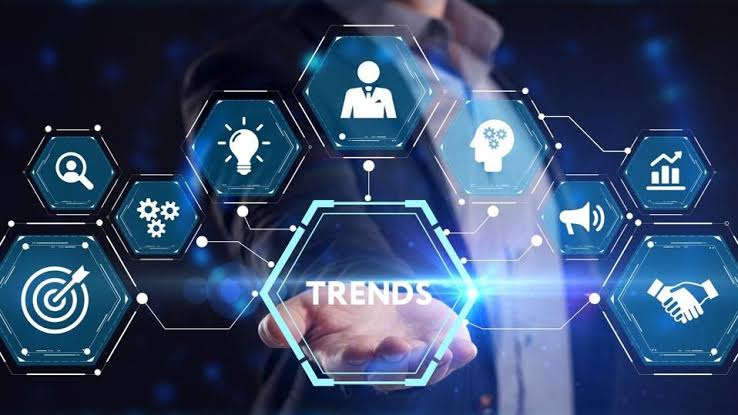Technology is evolving faster than ever, transforming the way we live, work, and connect with the world. From artificial intelligence to advanced digital experiences, emerging tech trends are creating endless opportunities for innovation. Businesses, entrepreneurs, and individuals who stay updated with these changes can adapt quickly and thrive in the digital age.
1. Artificial Intelligence (AI) and Machine Learning
AI is no longer just a buzzword it’s powering everything from virtual assistants to advanced data analytics. Businesses use AI to improve customer experiences, streamline operations, and make smarter decisions. In the future, AI will become even more personalized, making automation and predictive technologies a part of everyday life.
What is Artificial Intelligence (AI)?
Artificial Intelligence refers to the ability of machines to mimic human intelligence. It allows computers to perform tasks such as problem-solving, language processing, and decision-making without constant human input. AI applications range from chatbots and voice assistants to predictive analytics in finance and healthcare.
What is Machine Learning (ML)?
Machine Learning is a branch of AI that focuses on teaching machines how to learn from data. Instead of being explicitly programmed, ML systems improve their performance by analyzing patterns and making predictions. Popular examples include spam filters, recommendation systems, and fraud detection in banking.
2. Internet of Things (IoT)
Smart devices and connected systems are making homes, cities, and industries more efficient. From wearable health monitors to smart factories, IoT is creating a world where devices communicate seamlessly. The expansion of 5G technology will only accelerate this growth.
What is IoT?
The Internet of Things is a system of interconnected devices such as sensors, appliances, and machines that communicate with each other without human intervention. These devices gather data and use it to improve efficiency, safety, and convenience.
3. 5G Connectivity
The rollout of 5G networks is changing the way we experience the internet. With faster speeds, lower latency, and higher capacity, 5G enables advancements in areas like autonomous vehicles, virtual reality, and telemedicine. It’s a foundation for the next wave of digital innovation.
What is 5G?
5G stands for the fifth generation of wireless communication technology. Unlike 4G, which brought high-speed mobile internet, 5G offers speeds up to 100 times faster, near-instant responses, and the ability to connect billions of devices simultaneously. This makes it the backbone for future technologies like autonomous cars, smart cities, and advanced healthcare solutions.
5G connectivity is more than just an
4. Cloud Computing and Edge Computing
Cloud services are helping businesses scale quickly and securely. At the same time, edge computing is reducing delays by processing data closer to where it is generated. Together, they create powerful solutions for industries like healthcare, finance, and e-commerce.
What is Cloud Computing?
Cloud computing refers to delivering computing services such as storage, servers, databases, networking, and software over the internet. Instead of relying on physical hardware, businesses can access resources on-demand from providers like Amazon Web Services (AWS), Microsoft Azure, or Google Cloud.
What is Edge Computing?
Edge computing processes data closer to where it is generated, rather than sending everything to a centralized cloud.This reduces latency and ensures faster decision-making.
5. Cybersecurity Advancements
As technology evolves, so do cyber threats. Companies are investing in AI-powered security, blockchain verification, and advanced encryption to protect sensitive data. Cybersecurity will continue to be a top priority in the future digital world.
What is Cybersecurity?
Cybersecurity refers to the practice of protecting computers, networks, programs, and data from unauthorized access, attacks, or damage. It encompasses strategies, tools, and technologies designed to safeguard digital assets against evolving cyber threats.
6. Extended Reality (XR): AR and VR
Augmented reality (AR) and virtual reality (VR) are no longer limited to gaming. Businesses are using them for virtual shopping, immersive training, real estate tours, and even remote collaboration. As hardware becomes more affordable, XR will enter mainstream adoption.
What is Extended Reality (XR)?
Extended Reality (XR) refers to all real-and-virtual combined environments and human-machine interactions generated by computer technology and wearables. It encompasses:
- Augmented Reality (AR): Adds digital elements to the real world using devices like smartphones, tablets, or AR glasses. Examples include Snapchat filters and IKEA’s AR furniture app.
- Virtual Reality (VR): Creates a completely immersive digital environment that users can interact with through VR headsets like Oculus Rift or HTC Vive.
- Mixed Reality (MR): Combines AR and VR to allow real and virtual elements to interact in real time.
The future of technology is being shaped by innovations that aim to make life smarter, faster, and more connected. Whether it’s AI, IoT, or green tech, these trends will redefine industries and create new opportunities. Staying informed and adaptable is the key to success in this ever-changing digital era.

